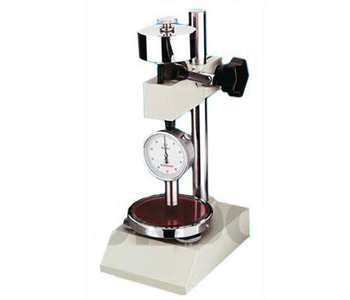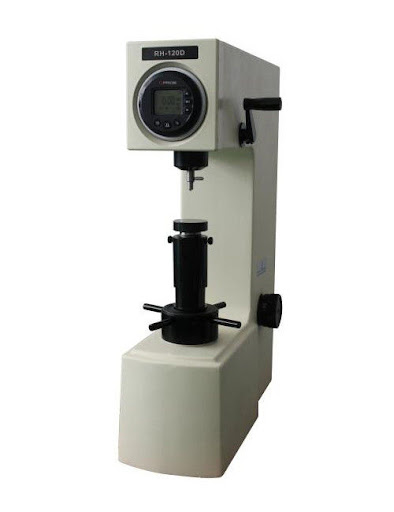Hardness is a key parameter in the manufacture of engineering parts. The hardness of polymers is usually measured by their resistance to hard objects. There are many methods and scales for measuring hardness, such as shore and Rockwell tests. In this article, we will get acquainted with the concept of hardness and its measurement methods and High Impact Polystyrene (HIPS) hardness tests.
What is Hardness?
Hardness is defined as the resistance of a material to the penetration of a needle with standard specifications or a rigid body and surface deformation or scratches. It can indicate the hardness of the top layer or the depth of the material. Due to the penetration of the hard body into the surface of the test sample, three-way stress is created at the pressure site. The resulting deformation is a combination of tensile, compressive, and shear deformations.
Factors affecting the hardness of materials are classified based on their internal characteristics, process, and additives. Influencing factors such as the chemical structure and type of intermolecular bonds, mixing, degree of crystallinity, temperature, humidity, additives (such as fillers), enhancers, emollients, and antioxidants affect the hardness of a substance.
Hardness test methods and tests measure how difficult it is to create an effect on the surface of the part or the degree of penetration of a sharp object into the sample. There is no absolute and uniform criterion for hardness and it can be measured by parameters such as the penetration of the needle under force, abrasion resistance, and abrasion resistance.
Types of standard tests for measuring the hardness of High Impact polystyrene (HIPS)
This test is one of the main and common physical and mechanical tests of materials. Due to the difficult definition presented in the previous section, several standard tests have been defined to measure this property.
In these tests, the general procedure is that a hard penetrating object is pressed against the surface of the test sample based on the geometry of the compressor shape. By applying pressure, creates three-dimensional stress and causes deformation at the surface of the sample. This test is very common and used because of its simplicity and importance.
The most common hardness tests include the Brinell hardness test, the Rockwell hardness test, and the Shore Durometer hardness test. These methods are used for a specific group of materials.
In cases such as the shape of the needle or penetrating body, the material of the needle (steel, hard metal, diamond), the amount and time of loading and applying force, the time of measuring the depression, and the method of measuring the hardness (in terms of penetration depth, recessed area, force) They are different from each other.
The following is a description of the Rockwell and Shore Dorumeter tests used to measure the hardness of High Impact Polystyrene (HIPS).
1- Rockwell Hardness Test
Rockwell hardness test is mainly used for hard plastics such as polycarbonate, nylon, polystyrene, and steel. The standards of this hardness test are ASTM D785 and ISO 2039. The penetrating body in this test is a conical body made of diamond or steel.
First, an initial force is applied to the HIPS sample by the penetrator for 10 seconds and penetrates it to a certain height. Then another force is applied for 15 seconds and penetrates the polymer to a certain height. The Rockwell hardness value is then calculated according to the standard figure.
The three most common Rockwell hardness test methods used in plastics are Rockwell E, Rockwell R, and Rockwell M. Details of these methods can be found in the table below.
Different methods of measuring Rockwell hardness
| Method name | Apply low load (kg) | Apply high load (kg) | Bullet diameter (in) | Bullet diameter (mm) |
| R | 10 | 60 | 0.5 | 12.7 |
| L | 10 | 60 | 0.25 | 6.35 |
| M | 10 | 100 | 0.25 | 6.35 |
| E | 10 | 100 | 0.125 | 3.175 |
| K | 10 | 150 | 0.125 | 3.175 |
2- Shore Durometer hardness test
The most common method of measuring the hardness of materials is the Shore Durometer method. This method is divided into two different types of Shore A and Shore D, in which a needle in the form of an incomplete cone and a needle in the shape of a cone with a spherical tip play the role of the penetrating body.

Shore Durometer Test
The Shore A test is used to determine the hardness of soft rubbers and very soft plastics such as softened PVC. Therefore, it is not very useful for measuring the hardness of polystyrenes. The Shore D test is used for the category of hard plastics.
This test is performed according to ASTM D2240 or ISO 868 standards. In both standards, force is applied by weight and spring, and the depth of the depression is a measure of stiffness. One of the advantages of this method is the portability of the test equipment due to the small size of the device.
The equipment required for this test includes a shore tester, equipment support base, HIPS sample, stopwatch, and weights suitable for applying force.
According to the ISO standard, the thickness of the HIPS sample must be at least 4 mm; According to ASTM standard should be at least 6 mm. To measure the hardness of the sample, the HIPS must be placed on the horizontal hard surface of the machine installed for this purpose. The tester is also placed in a vertical position (at least 9 mm away from the edges of the sample).
The compressor base rises quickly but without impact to place the indicator (Shore needle) on the sample and apply sufficient pressure. After 15 seconds, the Shore polymer hardness number can be read. Depending on the technical specifications or the standard of the product, the instantaneous hardness number can also be read 1 second after full contact and creating the appropriate pressure.
To achieve an acceptable amount of stiffness according to this standard, 5 different measurements with a distance of at least 6 mm must be performed and their average reported.

